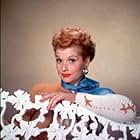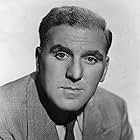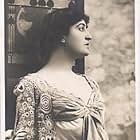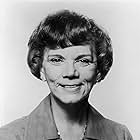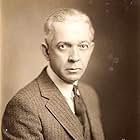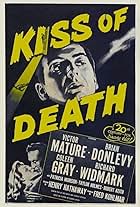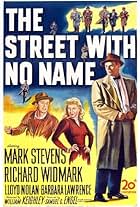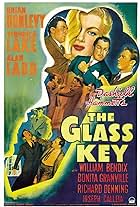IMDb RATING
7.1/10
5.4K
YOUR RATING
A secretary tries to help her boss who's been framed for murder.A secretary tries to help her boss who's been framed for murder.A secretary tries to help her boss who's been framed for murder.
Colleen Alpaugh
- Little Girl with Slide Whistle
- (uncredited)
Charles Cane
- Policeman at Tony's Apartment
- (uncredited)
Ellen Corby
- Maid
- (uncredited)
Peter Cusanelli
- Minor Role
- (uncredited)
Ralph Dunn
- Policeman in Galleries
- (uncredited)
John Elliott
- Laundry Proprietor
- (uncredited)
Mary Field
- Movie Theatre Cashier
- (uncredited)
Alice Fleming
- Minor Role
- (uncredited)
John Goldsworthy
- Butler
- (uncredited)
Storyline
Did you know
- TriviaIn later years, Lucille Ball was vocal about hating the experience of shooting "The Dark Corner". The lion's share of her resentment was pointed at director Henry Hathaway, whose bullying reduced Ball to stuttering on set, at which point Hathaway accused her of being inebriated.
- GoofsWhen private investigator Bradford Galt strong-arms Fred Foss to reveal his home phone number, Foss replies, "CHelsea 4-43510." In the Manhattan phone book for 1946, they only had the CHelsea 2 and CHelsea 3 exchanges. This may be an early version of the 555 prefix which is the convention for fictional phone numbers.
- Quotes
Hardy Cathcart: How I detest the dawn. The grass always looks like it's been left out all night.
- ConnectionsReferenced in Cry of the City (1948)
- SoundtracksGive Me the Simple Life
(uncredited)
Music by Rube Bloom
Played when Brad and Kathleen are looking at the nickelodeons
Featured review
It's a loss to the noir cycle that Lucille Ball never got to exercise her widely underestimated acting (as opposed to comedic) skills as a femme fatale; she might have gained entry to the Bad Girls' Club. She did, however, lend her welcome presence to three film noir: Two Smart People, Lured, and, the first and best of them, The Dark Corner.
She plays the new, spunky receptionist to private eye Mark Stevens (and gets top billing; logically the star, Stevens comes only fourth in the titles). Once framed into a manslaughter charge in San Francisco, Stevens has come east to start over with a clean slate. But he's being measured for an even bigger frame. White-suited William Bendix is the cat's-paw in a plot to goad Stevens into murdering the old partner who set him up (Kurt Kreuger).
Kreuger, however, isn't even aware that Stevens is out of prison and in New York; he's too busy romancing the young wife (Cathy Downs) of rich art-gallery owner Clifton Webb (she sits around bored, listening to `his paintings crack with age'). Webb is the puppet-master behind the elaborate scheme to eliminate his younger, more virile rival. When Stevens comes to on the floor of his apartment with a poker in his hand and Kreuger bludgeoned to death next to him, he, with Ball's help, must race against his inevitable arrest to find the real killer.
The story flits between two Manhattans: The shabby cityscape of penny arcades under the El and flats that open up onto fire escapes, populated by Stevens, Ball and Bendix, and the haut monde of ritzy galleries and high-ceilinged, richly upholstered apartments inhabited by Clift, Downs and Kreuger. Spanning the gap is the unholy alliance between the coarse Bendix and the p***-elegant Webb, reprising his Bitter Old Queen number from Laura and The Razor's Edge (though again, as in Laura, we're asked to swallow his obsession with a beautiful...woman half his age).
While maintaining a deft balance, the plot weighs in as quite a brutal one (Webb's quick dispatch of Bendix proves quite startling). Despite this role and The Street With No Name, Stevens never quite became the noir icon - like Ladd or Bogart or Mitchum (or even like Powell or Ford or Ryan) he seemed destined for, but he's persuasive enough as a man strained to the limit by forces he can't fathom.
Henry Hathaway directed, but the black magic comes courtesy of cinematographer Joe MacDonald. He ably lighted a number of estimable noirs (Street With No Name, Call Northside 777, Pickup on South Street), but here his work surpasses itself. When Ball and Stevens embrace, he turns a two-shot into a four-shot by placing them in front of a fireplace mirror; we see her face in the foreground, his in reflection. In plot, writing and direction, The Dark Corner falls just short of the finest entries in the cycle. But in its strikingly composed photography, finely filigreed with shadow, it could be shown at a gala opening in Webb's high-priced gallery.
She plays the new, spunky receptionist to private eye Mark Stevens (and gets top billing; logically the star, Stevens comes only fourth in the titles). Once framed into a manslaughter charge in San Francisco, Stevens has come east to start over with a clean slate. But he's being measured for an even bigger frame. White-suited William Bendix is the cat's-paw in a plot to goad Stevens into murdering the old partner who set him up (Kurt Kreuger).
Kreuger, however, isn't even aware that Stevens is out of prison and in New York; he's too busy romancing the young wife (Cathy Downs) of rich art-gallery owner Clifton Webb (she sits around bored, listening to `his paintings crack with age'). Webb is the puppet-master behind the elaborate scheme to eliminate his younger, more virile rival. When Stevens comes to on the floor of his apartment with a poker in his hand and Kreuger bludgeoned to death next to him, he, with Ball's help, must race against his inevitable arrest to find the real killer.
The story flits between two Manhattans: The shabby cityscape of penny arcades under the El and flats that open up onto fire escapes, populated by Stevens, Ball and Bendix, and the haut monde of ritzy galleries and high-ceilinged, richly upholstered apartments inhabited by Clift, Downs and Kreuger. Spanning the gap is the unholy alliance between the coarse Bendix and the p***-elegant Webb, reprising his Bitter Old Queen number from Laura and The Razor's Edge (though again, as in Laura, we're asked to swallow his obsession with a beautiful...woman half his age).
While maintaining a deft balance, the plot weighs in as quite a brutal one (Webb's quick dispatch of Bendix proves quite startling). Despite this role and The Street With No Name, Stevens never quite became the noir icon - like Ladd or Bogart or Mitchum (or even like Powell or Ford or Ryan) he seemed destined for, but he's persuasive enough as a man strained to the limit by forces he can't fathom.
Henry Hathaway directed, but the black magic comes courtesy of cinematographer Joe MacDonald. He ably lighted a number of estimable noirs (Street With No Name, Call Northside 777, Pickup on South Street), but here his work surpasses itself. When Ball and Stevens embrace, he turns a two-shot into a four-shot by placing them in front of a fireplace mirror; we see her face in the foreground, his in reflection. In plot, writing and direction, The Dark Corner falls just short of the finest entries in the cycle. But in its strikingly composed photography, finely filigreed with shadow, it could be shown at a gala opening in Webb's high-priced gallery.
- How long is The Dark Corner?Powered by Alexa
Details
- Release date
- Country of origin
- Languages
- Also known as
- Feind im Dunkel
- Filming locations
- Burden Mansion, 7 East 91st Street, New York City, New York, USA(The Cathcart Gallery)
- Production company
- See more company credits at IMDbPro
Box office
- Gross US & Canada
- $1,000,000
- Runtime1 hour 39 minutes
- Color
- Aspect ratio
- 1.33 : 1
Contribute to this page
Suggest an edit or add missing content










